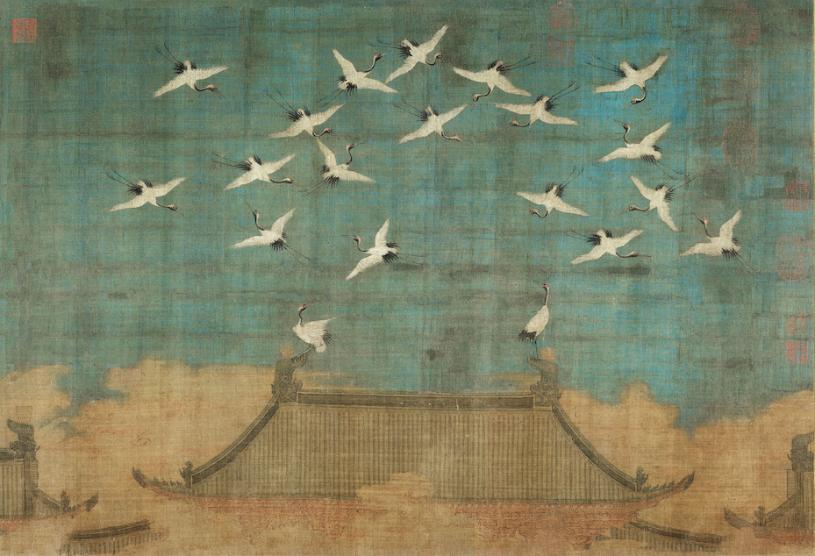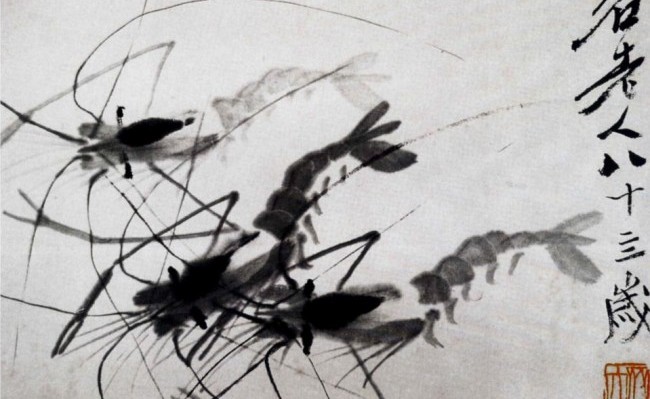Guohua 国画, often known as traditional Chinese painting, is a revered art form with roots stretching back over a thousand years. It distinguishes itself through unique techniques and philosophical underpinnings, creating a visual language that speaks deeply to Chinese culture and heritage.
Key Characteristics
- Materials: Guohua artists typically use natural materials. BrushesBrushes are indispensable tools for artists, used to apply paint, create textures, and define details. With a wide range of shapes, sizes, and materials available, understanding the different types of brushes and their uses can significantly enhance an artist's work. Definition and Composition • Brush: An artist's tool made up of a handle, a ferrule (the metal part that connects More made from animal hair, inkInk, a liquid or paste used for writing, drawing, and printing, has played a crucial role in communication and artistic expression throughout history. Made from various pigments and dyes, ink allows for the transfer of text and images onto surfaces such as paper, fabric, and other materials. Types of Ink There are several types of ink, each serving different purposes More made from pine soot and glue, and paper or silk form the basis of their work.
- Techniques: The primary techniques include meticulous brushstrokes and washes. Artists control the brush to create varying thicknesses of lines, crucial for conveying texture and movement.
- Subjects: Common subjects in Guohua include landscapes, birds, flowers, and animals. These subjects are infused with the artist’s emotional and philosophical reflections.

Styles and Forms
Guohua can be categorized into several styles, each with its unique approach and emphasis.
- Shan ShuiShan Shui 山水, translating to "mountain and water," is a prominent style within traditional Chinese painting. It captures the serene beauty of nature through a harmonious blend of landscapes, focusing on mountains, rivers, and forests. This genre highlights the direct relationship between humans and the natural world. Key Characteristics • Materials: Shan Shui artists use natural materials such as ink More 山水 (Mountain and Water): This style focuses on landscapes, often highlighting the harmonious relationship between nature and humanity. For example, Fan Kuan’s “Travelers Among Mountains and Streams” showcases majestic mountains with intricate details and a sense of vastness.
- Gongbi 工笔 (Meticulous): Known for its precise and detailed brushworkMasterful brushwork is often the defining feature of great artists, where the brush becomes an extension of their arm, allowing paint to flow effortlessly onto the canvas. These artists demonstrate a profound understanding of their medium, knowing precisely when to apply thick, textured strokes or smooth, delicate ones. Their skill extends beyond mere color application; it's about the artistry of More, Gongbi often portrays birds and flowers with great care. An example is Emperor Huizong’s “Auspicious Cranes,” which depicts cranes with exquisite detail.
- Xie Yi 写意 (Freehand): This style emphasizes expressiveness over detail. It allows for more spontaneous and abstract representations. Qi Baishi’s “Shrimps” exemplifies this with its lively and free-flowing brushstrokes.

Philosophical Foundations
Chinese paintingPainting is a fundamental form of visual art that has been practiced for thousands of years. It involves applying pigment to a surface such as canvas, paper, or a wall. Painting can be explored through various styles, techniques, and mediums, each offering unique possibilities for expression and creativity. Historical Background • Ancient Beginnings: The history of painting dates back to More is deeply intertwined with Daoist and Confucian philosophies. These beliefs emphasize harmony with nature and the importance of moral integrity.
- Daoism: Encourages the depiction of natural forms and the use of negative space to suggest the unseen.
- Confucianism: Influences the moral and ethical dimensions of art, stressing the painter’s character and intention.

Tools and Materials
The tools and materials used in Guohua are as integral to the art as the techniques themselves.
- BrushesBrushes are indispensable tools for artists, used to apply paint, create textures, and define details. With a wide range of shapes, sizes, and materials available, understanding the different types of brushes and their uses can significantly enhance an artist's work. Definition and Composition • Brush: An artist's tool made up of a handle, a ferrule (the metal part that connects More: Made from various animal hairs like goat, wolf, or rabbit, each brush serves a specific purpose.
- InkInk, a liquid or paste used for writing, drawing, and printing, has played a crucial role in communication and artistic expression throughout history. Made from various pigments and dyes, ink allows for the transfer of text and images onto surfaces such as paper, fabric, and other materials. Types of Ink There are several types of ink, each serving different purposes More: Traditional inkInk, a liquid or paste used for writing, drawing, and printing, has played a crucial role in communication and artistic expression throughout history. Made from various pigments and dyes, ink allows for the transfer of text and images onto surfaces such as paper, fabric, and other materials. Types of Ink There are several types of ink, each serving different purposes More sticks, ground on an inkInk, a liquid or paste used for writing, drawing, and printing, has played a crucial role in communication and artistic expression throughout history. Made from various pigments and dyes, ink allows for the transfer of text and images onto surfaces such as paper, fabric, and other materials. Types of Ink There are several types of ink, each serving different purposes More stone with water, provide the rich black hues characteristic of Guohua.
- Paper and Silk: Artists choose between different types of rice paper and silk, each affecting the absorption and appearance of inkInk, a liquid or paste used for writing, drawing, and printing, has played a crucial role in communication and artistic expression throughout history. Made from various pigments and dyes, ink allows for the transfer of text and images onto surfaces such as paper, fabric, and other materials. Types of Ink There are several types of ink, each serving different purposes More and color.
Techniques in Practice
Mastering Guohua requires understanding and practicing several key techniques.
- Brushstrokes: Controlled and deliberate, they vary in thickness and intensityIn color theory, intensity, also known as saturation or chroma, refers to the purity and vividness of a color. This property is essential for artists and designers as it helps create dynamic and engaging visuals. Intensity determines how bright or dull a color appears, influencing the overall impact and mood of a composition. Defining Intensity Intensity measures the degree of More.
- Washes: These create subtle gradients and depths, essential for backgrounds and landscapes.
- Dotting: Used for textures, like the leaves on trees or fur on animals.
Cultural Significance
Guohua holds a prominent place in Chinese culture, reflecting the nation’s history, philosophy, and aesthetics.
- Historical Influence: It has been a central part of Chinese artistic tradition, influencing other art forms and cultural practices.
- Modern Relevance: Today, Guohua continues to inspire contemporary artists, both within China and internationally.
Learning and Mastery
Becoming proficient in Guohua involves a blend of studying traditional techniques and developing a personal style.
- Study: Artists often begin by copying masters’ works, a practice that helps them understand the techniques and philosophies behind the art.
- Practice: Regular practice is essential. Many artists dedicate years to mastering the brushworkMasterful brushwork is often the defining feature of great artists, where the brush becomes an extension of their arm, allowing paint to flow effortlessly onto the canvas. These artists demonstrate a profound understanding of their medium, knowing precisely when to apply thick, textured strokes or smooth, delicate ones. Their skill extends beyond mere color application; it's about the artistry of More and control required.
Preservation and Evolution
Guohua, while traditional, is not static. It evolves with each generation of artists who bring new perspectives while respecting its foundational principles.
- Innovation: Modern artists experiment with materials and subjects, pushing the boundaries while honoring tradition.
- Education: Institutions and artists work to keep Guohua alive through teaching and exhibitions, ensuring its continued relevance and appreciation.
In summary, Guohua represents a rich tapestry of artistic expression, deeply rooted in Chinese culture and philosophy. It combines meticulous technique with profound philosophical insights, creating a form of art that is both visually captivating and spiritually resonant.
You might enjoy reading further articles by Pigment Pool:
Understanding Chinese Art Styles: From Shan Shui to Guohua
Bamboo Art: Picture Serenity through Chinese Brushwork
Chinese Paintings HD Wallpapers for Phone and Laptop: Free Download for Art Enthusiasts
Chinese Coloring Pages: Free Printable for Art Enthusiasts
Yin-Yang Aesthetic: A Symbol Transcending Time and Culture
Mandala Therapy: Art Techniques to Soothe Anxiety and Stress
A brief history of colour pigments
Impressionism and Japonisme: How Japan Has Inspired Western Artists
